The Bill Evans (early) solo piano style and fingers’ dexterity: “The Solo Sessions” (sheet music available)
On January 10, 1963, for his final contracted studio date for Riverside Records, Bill Evans made an abortive attempt at recording a purely solo album. The resulting material was ultimately not sanctioned for release, becoming commercially available only after Evans’ death in 1980.
Leaving aside any analysis of the reasons behind the decision to shelve the session, the recorded material itself is an extended document of Evans’ solo pianistic facture during what was at the time a transitional point in his career. Although Evans had included a number of solo tracks on his earlier trio albums New Jazz Conceptions (1956) and Everybody Digs Bill Evans (1958), and four tracks exist from another earlier abortive attempt to record a solo album in April, 1962, the 85 minutes of music from The Solo Sessions provide the most comprehensive opportunity both to examine his approach at that time to solo realisation (in general, as well as across a single recording date), and to define the various factural characteristics of his early solo style.
Additionally, as much of Evans’ selection of material for these sessions comprises the mix of standards and contemporary popular songs typical of his repertoire base, with several of these numbers subsequently re-recorded in trio or solo contexts over the following decade, these recordings also form a benchmark in charting the progress of his solo style, before its consolidation with the Alone album at the end of the 1960s.
Evans’ biographers have also recognised the significance of this session within his discography. In Pettinger’s interpretation, it is an opportunity to view the ‘artist’s workshop, to survey the tools of his trade, piles of sketches, scattered maquettes. Everything has a raw, unfinished aspect and there is much craziness besides’. Although more dismissive of the session from both a technical and aesthetic standpoint, Shadwick declares that ‘this set of recordings is fascinating to fellow pianists or students anxious to penetrate the Evans process of creation’.
Bill Evans “The Solo Sessions” music
In order to contextualise the process, from which Evans’ pianistic facture is created, it is necessary to examine a number of salient stylistic features prevalent throughout the recordings that comprise The Solo Sessions, in which various physical considerations in performance often play a generative or influential role. There are two elements, which perhaps exert the most fundamental influence upon Evans’ pianistic facture – a theoretical one, arising from the principles of voice-leading in fifth-based harmonic movement, and a physical one, stemming directly from the flexibility Evans was able to demonstrate by possessing a very wide handspan.
This physical capacity is particularly exploited to the full in his solo work, enabling him to utilise an open-voiced and resonant style of harmonic scoring, incorporating stretches in the left hand up to an eleventh and regularly inclusive of an inner note, usually the seventh. Connecting these two elements together is Evans’ decision to consistently maintain the root of a given harmony as an anchoring presence, creating a characteristic harmonic texture present throughout all of his solo recordings during this period.
For these left-hand chord shapes, Evans overwhelmingly utilises a standard triadic structure of tonic, third (or tenth) and seventh, featuring fifth-based root movement in the lowest voice, coupled with stepwise movement (inclusive of suspensions) in the upper two voices. Indebted to the physical stretch obtainable from his hands, this can be considered as Evans’ standard realisation of movement through the cycle of fifths, and is also approached with a standard pattern of fingering. Ex.1 presents a short ii-V-I turnaround from ‘All The Things You Are’, as one example amongst many, to illustrate this characteristic texture:
Ex.1. ‘All The Things You Are’, bars 75 – 78 (2:24 – 2:29).


In progressions not based around the cycle, these left-hand triadic structures are often simply transposed as required, maintaining a harmonic foundation built around the parallel motion of root position sevenths. When moving by step, especially within the context of a harmonised (and especially chromatically) ascending or descending bassline, they may also appear as an inverted passing chord within a progression, a role explaining many appearances of localised inverted harmony within Evans’ solo style.
Regardless of harmonic functionality, this kind of rigid shifting of a chord shape emphasises in turn the physical parameter behind Evans’ progressions, where the automatic physical placement of the hand and harmonic voicings arising from the hand position itself exercise an influential (or even determinant) effect on the resulting facture.
Nevertheless, notwithstanding the level of physical ‘automaticism’ in respect to facture, a theoretical framework behind the progressions is often strictly maintained, demonstrating Evans’ intellectual discipline in respect to the consistency of voice leading and harmonic structures at points where material is transposed en bloc. This can be shown in a segment of ‘Santa Claus Is Coming To Town’, in which the same left-hand voicings from the first four bars (bars 117 – 120) are retained for the sequential transposition a tone higher, commencing in the fifth bar (bar 121), working to consolidate the phrase structure here during the harmonic modulation concurrently in progress.
Ex.2. ‘Santa Claus Is Coming To Town’, bars 117 – 125 (2:57 – 3:09).

These theoretical foundations to the harmony are at their most exposed within left-hand accompaniments to a solo line, where often sparser textures and varying distances in tessitura between line and accompaniment tend to highlight the motion of the underlying chords. However, the extent of Evans’ absorption of these chord shapes as a basis for constructing much of the overall texture found in The Solo Sessions is also demonstrated in instances where texture is influenced by the stylistic considerations of particular songs, or where the harmonic scoring is more fragmented or divided in various ways between the hands.
For ballads in slow tempo and in other more lyrical settings, Evans often utilises a standard pianistic texture involving simple arpeggiations of the left-hand chord structures, which is then balanced by a harmonisation of the melodic line within the right hand. An archetypal example is offered in the second section of the head from ‘What Kind of Fool Am I (Take 2)’.
Although the desire to unambiguously establish the background harmony usually results in directing the motion of the arpeggio upwards from the root note, the presence of arpeggiated left-hand chord shapes within the texture is made less apparent by regularly shifting the root note onto and off the beat, an effect supported in conjunction with the rhythmic profile and particular doublings of harmonic pitches found in the right hand.
Within the right hand itself, the thumb reveals its standard role in Evans’ facture as an anchor for sustaining or emphasising selected pitches beneath the melodic line, as well as (in this case) for also providing localised octave reinforcement.
Ex.3. ‘What Kind Of Fool Am I? (Take 2)’, bars 20 – 30 (0:54 – 1:23).

A second context demonstrating the way in which these standard left-hand chord shapes are integrated concerns Evans’ perhaps most commonly used texture during statements of the head, or within other sections where the elaboration of the melodic line requires more extended harmonic support.
Excepting instances of doubling, Evans habitually situates the melody exclusively in the highest voice; the harmonisation meanwhile is often divided between both hands working in close proximity, usually homophonically, with the lower fingers of the right hand allocated to voicing extended harmonic pitches (focused particularly around the ninth) and at times also the upper note from the standard left-hand triadic progressions outlined above.
The head of the Gershwin song ‘Love Is Here To Stay’ shows one effective realisation of this kind of texture. Its extensive fifth-based root movement fits neatly within the corresponding natural framework of Evans’ harmonic preferences, while short phrase lengths finished with sustained notes in the melody allow for the motion of inner parts at these points to be brought to the foreground. In the right hand, the second and third fingers have a dynamic function through voicing chromatic passing figurations, in which suspensions are stated and resolved, while the thumb is regularly anchored in its complementary sustaining role.
This method of dividing up the fingers according to a specific pre-determined functionality can again be described as typical of Evans’ approach to facture in its combination of theoretical and physical considerations.
Ex.4. ‘Love Is Here To Stay’, bars 1 – 16 (0:00 – 0:29).

Evans’ realisation of this Gershwin song is notable for the way in which variations in texture are used structurally to clearly delineate the form as it unfolds. A further example (see Ex.5 below) from the second solo section of the song, corresponding to the recommencement of the 32-bar form, again utilises simple arpeggiations to help disguise the standard harmonic scoring, but is now presented as a texture homophonically unified with the right hand.
The employment of fixed hand positions is again pivotal in this texture, with the motion of the right hand dyads in particular almost ‘resolving’ ultimately onto a natural hand shape anchored on each occasion by the thumb. This example also contains a number of Evans’ almost routine textural signatures, already well-established in his earlier solo work, and encountered often throughout The Solo Sessions.
These include a three or four-part texture of close position inverted chords, progressing in common similar motion or in oblique motion with the inner parts and often prolonging a central harmony using neighbour chord figurations (see bar 76 in Ex.5), and the arpeggiation of a more extended harmony, usually centred on a ninth chord, within the span of one hand position and scored as two 7th chords at the distance of a tenth between the hands, as found here stating a Gm9 across bars 70-71 (2:05 – 2:07). This last textural signature is a device that by this point in Evans’ improvisatory style had become almost ‘automicised’ as a standard (if not clichéd) prolongation technique.
Ex.5. ‘Love Is Here To Stay’, bars 64 – 77 (1:54 – 2:18).

A similar mix of theoretical and physical principles guides the construction of Evans’ solo lines. As a general rule, elaborations within the line at a given point can often be reduced back to identify one particular harmonic note as a localised focus. The background voice-leading that connects these ‘focus notes’ together is often readily apparent and creates an implied four-part texture in combination with the triadic harmony in the left hand. Although by no means quantifiable as a list of mannerisms, there are certain tendencies within Evans’ method of solo elaboration around these focus notes, in which particular melodic shapes (and by extension hand shapes) play an integral role.
In Ex.6 below, from ‘Ornithology’, a number of standard characteristics within Evans’ solo elaborations are stated in succession. Over the first two bars, the focus note ‘D’ in the right hand is emphasised through repetition within a number of chromatic and ornamental neighbour figures. The fleeting broken chord in the third beat of the second bar (right hand) works to re-anchor the hand position after this material by engaging the thumb at a point (F4) beneath the solo line.
This is a standard and fundamental technique within Evans’ right-hand linear elaborations, where an exterior note, usually taken by the thumb (and thus operating below the tessitura of the main line, creating at times the effect of an otherwise implied additional harmonic voice), is used to interrupt the momentum of scalic (especially chromatic) motion, and has a tendency to steer the overall direction of a line downwards.
This same procedure can be seen at the end of bar 131 in Ex.6, with the same figure again stated in transposition a tone lower during the penultimate bar.
Octave transference of a pitch is also common and is often connected in conjunction with an arpeggiation of the current harmony (or its extension), observable in this case within the third (C5 down to C4) and fourth (A4 up to A5) bars of Ex.6. In the third bar, downwards transference of the focus note C leads the solo line to interact with both the harmonic schemata and textural layer of the left hand. This manner of interaction between the hands is a feature often exploited within Evans’ solo sections, reinforcing the cohesion between solo and accompanimental layers while providing points of structural punctuation both within the flow of the solo line and through variation of the overall textural width.
The figurations of the fourth and fifth bars in the example display other standard improvisatory figures from Evans’ catalogue, especially well-suited for improvisation within a rapid tempo – groups of four-note arpeggios spanning a seventh chord within one hand position, often preceded by an ornamental chromatic inflection, followed in this example by ornamental crushed notes (bars 130 – 131), a colouristic gesture again dominated by the physical process of shifting hand position and movement down through the fingers towards the thumb (and as a common gesture of Evans’ style, overwhelmingly in descending motion to the given goal note, further emphasising the thumb’s dominant role). Bars 133 – 134 again demonstrate octave transference via the automicised use of an ascending embellished four-note arpeggio, in effect a transposition of bar 129 a tone lower.
Ex.6. ‘Ornithology’, bars 126 – 136 (2:35 – 2:48).

Many of these characteristic solo elaborations can also be observed in a second example, a segment from ‘What Kind of Fool Am I (Take 2)’. The above-mentioned technique of re-anchoring the hand position by allocating a lower exterior note to the thumb is easily identifiable at the end of the third bar of Ex.7, as is its function to disrupt the movement of the chromatic line (from Eb5 down to C5) in bar 130.
The example again illustrates the various methods employed for the prolongation of particular structural pitches in the right hand through use of octave transference and neighbour-note ornamentations, in this instance for the focus note ‘F’, which is structurally central throughout the example and functions as a pivot note for the modulation occurring roughly halfway through, as the initial note of both bar 129 and bar 130.
The directed gradual descent of the solo line leads into another instance of textural interaction between the hands, where the final punctuating Ab of the right hand (bar 133) links directly into the following left-hand harmony, which is then further stated an octave higher within the right hand as a means of resuming the solo line (end of bar 134).
Ex.7. ‘What Kind Of Fool Am I? (Take 2)’, bars 122 – 134 (4:25 – 4:47).

The allocation of particular functions to particular fingers is a concept also transferable to the various roles fulfilled by the left hand. Within its harmonic role, in which the outer notes (particularly the root note usually given to the fifth finger) have limited possibilities for manipulation, the second and third fingers are again able to carry localised figurations, granting some degree of flexibility to the inner voice.
Often, these figurations have a purely ornamental or colouristic function, and are usually restricted to stepwise movement towards or alternation between the seventh, sixth and dominant degrees, as can be seen in the first two examples of Ex.8 (in bar 41):
Ex.8a. ‘Autumn in New York’, bars 39 – 44 (0:59 – 1:07).

‘Ornithology’, bars 162 – 164 (3:22 – 3:26).

At instances in which the outer voices of the left hand are sustained over longer periods, the reduction in harmonic rhythm may enable the inner voice to operate more structurally in counterpoint with another voice (usually the solo line), in this case expanding the fifth/seventh transference into an inner chromatic line:
Ex.8b ‘I Loves You, Porgy’, bars 113 – 119 (4:21 – 4:32).

Within its context of supplying the harmonic foundation, the left hand may also utilise individual fingers to highlight various pitches through restatement within a sustained chord, usually as a means to interact rhythmically with the material in the right hand. In an extract from ‘Ornithology’, under a chromatically oscillating pattern of broken thirds in the right hand, various combinations of individual pitches from a sustained chord or of a full chord itself within the underlying triadic harmony are re-stated with a slight rhythmic delay against the dominant triplet rhythm.
Ex.9. ‘Ornithology’, bars 140 – 150 (2:56 – 3:09).

This rhythmic delay between one hand in relation to the other is a particularly common and idiosyncratic feature of Evans’ performing style throughout The Solo Sessions, and indeed, his solo style in general. At times when the texture is reduced to a single line (or in the context that Evans presents it, doubled at the octave between the hands), rhythmic discrepancies between the hands are particularly telling in this respect. Appearing more often in the left hand, rhythmic delay is especially prominent during accompanimental passages in which the degree of (rhythmic) interplay between the hands is accentuated.
While naturally affecting the overall feel of Evans’ playing, it also works in a subtle way to vary and to augment the apparent textural density. Within a solo performance context, away from the opportunities for rhythmic interaction with an ensemble and the ongoing additional dimension that other instruments provide, perhaps Evans felt the need to construct a role for the left hand, in which its special rhythmic profile and the ghosting of individual notes function as a substitute for these missing instrumental roles. Its prominence in solo sections may then function also as a means to compensate for the reduction of texture in the right hand to a single line.
As such, it would represent another important element of the specific facture, characterising Evans’ solo style from the period of The Solo Sessions.
Bill Evans – How My Heart Sings
Personnel: Bill Evans (p) Chuck Israels (b) Paul Motian (dr)
Released: January 1964
Recorded: May 17, 1962 (#1, 6) May 29, 1962 (#5, 7, 9) June 5, 1962 (#2-4, 8) Sound Makers Studio
Label: Riverside RLP 473
Producer: Orrin Keepnews
“How My Heart Sings” (Earl Zindars)
“I Should Care” (Sammy Cahn, Axel Stordahl, Paul Weston)
“In Your Own Sweet Way” (Dave Brubeck)
“In Your Own Sweet Way” [alternate take – bonus track]
“Walkin’ Up” (Bill Evans)
“Summertime” (George Gershwin, Ira Gershwin, DuBose Heyward)
“34 Skidoo” (Evans)
“Ev’rything I Love” (Cole Porter)
“Show-Type Tune” (Evans)
Browse in the Library:
| Artist or Composer / Score name | Cover | List of Contents |
|---|---|---|
| Trinity Classical Guitar 2020-2023 INITIAL |
 |
|
| Trinity Classical Guitar Grade 05 2010-2015 |
 |
|
| Trinity Electronic Keyboard Grade 1 Pieces & Technical work |
 |
Trinity Electronic Keyboard Grade 1 |
| Trinity Electronic Keyboard Grade 2 Pieces & Technical work |
 |
Trinity Electronic Keyboard Grade 2 |
| Trinity Electronic Keyboard Grade 6 Pieces & Technical work |
 |
Trinity Electronic Keyboard Grade 6 |
| Trinity Electronic Keyboard Grade 7 Pieces & Technical work |
 |
Trinity Electronic Keyboard Grade 7 |
| Trinity Electronic Keyboard Initial Grade 2019-2022 |
 |
|
| Trinity Electronic Keyboard Initial Pieces and Technical Work 2015-2018 |
 |
|
| Trinity Electronic Keyboard Sample Booklet |
 |
|
| Trinity Guitar 2016 2019 Grade 1 |
 |
|
| Trinity Guitar 2016 2019 Grade 2 |
 |
|
| Trinity Guitar 2016 2019 Grade 3 |
 |
|
| Trinity Guitar 2016 2019 Grade 4 |
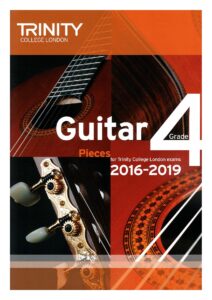 |
|
| Trinity Guitar 2016 2019 Grade 5 |
 |
|
| Trinity Guitar 2016 2019 Grade 6 |
 |
|
| Trinity Guitar 2016 2019 Grade 7 |
 |
|
| Trinity Guitar 2016 2019 Grade 8 |
 |
|
| Trinity Guitar 2016 2019 Initial |
 |
|
| Trinity Guitar Initial to Grade 5 Scales Arpeggios and studies |
 |
|
| Trinity Piano Grade 1 Pieces and exercises 2018 2020 |
 |
Trinity Piano Grade 1 Pieces and exercises 2018 2020 |
| Trinity Piano Grade 2 Pieces and exercises 2018 2020 |
 |
|
| Trinity Piano Grade 3 Pieces and exercises 2018 2020 |
 |
|
| Trinity Piano Grade 5 Pieces and exercises |
 |
|
| Trinity Piano Grade 6 (2021-2023) Extended Edition |
 |
Trinity Piano Grade 6 (2021-2023) Extended Edition |
| Trinity Piano Grade 6 Pieces and exercises |
 |
|
| Trinity Piano Initial Piano 2018-2020 | Trinity Piano Initial Piano 2018-2020 | Trinity Piano Initial Piano 2018-2020 |
| Trinity Piano Pieces And Exercises Grade 1 2015 2017 |
 |
Trinity Piano Pieces And Exercises Grade 1 2015 2017 |
| Trinity Piano Pieces And Exercises Grade 2 2015 2017 |
 |
Trinity Piano Pieces And Exercises Grade 2 2015 2017 |
| Trinity Piano Pieces Grade 1 2021-2023 |
 |
Trinity Piano Pieces Grade 1 2021-2023 |
| Trinity Piano Pieces Grade 2 12 Piano Pieces 2021-2023 |
 |
Trinity Piano Pieces Grade 2 12 Piano Pieces 2021-2023 |
| Trinity Rock and Pop Guitar Grade 8 (Contemporary and classic songs) with Tablature |
 |
Trinity Rock and Pop Guitar Grade 8 (Contemporary and classic songs) |
| Trinity Sight Reading Book 1 Sound at sight Piano |
 |
|
| Trinity Theory Of Music Workbook Grade 1 |
 |
Trinity Theory Of Music Workbook Grade 1 |
| True Silent Hill-2- Akira-Yamaoka |
 |
|
| Truman Show, The Reunion Philip Glass |
 |
|
| Trumpet Method Allen Vizzutti Trumpet Method Book 1 2 3 Complete |
 |
|
| Trumpet Method Anthony Plog Method For Trumpet Complete 7 books |
 |
|
| Trumpet Omnibook For B Flat Instruments Transcribed Exactly From Artist Recorded Solos |
 |
Trumpet Omnibook For B Flat Instruments Transcribed Exactly From Artist Recorded Solos |
| Trumpet Solos, Easy (The Canadian Brass) |
 |
|
| Trumpet, The (John Wallace, Alexander McGrattan) Yale Musical Instruments Series (Book) |
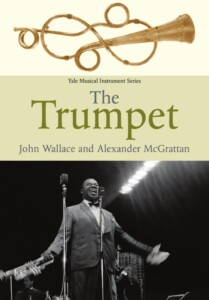 |
|
| Tsim Sha Tsui Stroll (Lust, Caution OST) Alexandre Desplat | ||
| Tu vuo’ fa’ l’Americano (Renato Carosone) | ||
| Tubular Bells (Mike Oldfield) |
 |
|
| Tubular Bells Intro – Mike Oldfield (Musescore File).mscz | ||
| Tuck Andress Europa by Carlos Santana guitar TABs |
 |
|
| Tuck Everlasting (The Musical) Music By Chris Miller Lyrics By Nathan Tysen (Piano Vocal Selections) |
 |
Tuck Everlasting (The Musical) Music By Chris Miller Lyrics By Nathan Tysen (Piano Vocal Selections) |
| Tunes For Ten Fingers A First Piano Book By Pauline Hall (Oxford) |
 |
|
| TV and Movie Themes (Piano, Vocal, Guitar) |
 |
TV and Movie Themes (Piano, Vocal, Guitar) |
| TV Detective Themes For Solo Piano |
 |
TV Detective Themes For Solo Piano |
| TV Fake Book, The |
 |
TV Fake Book, The |
| TV Songs Big Book Of TV Theme Songs 2nd Edition Piano Vocal Guitar |
 |
TV Songs Big Book Of TV Theme Songs 2nd Edition Piano Vocal Guitar Contents |
| Twelve Etudes Op 8 No 12 Scriabin (Musescore File).mscz | ||
| Twenty One Pilots – Goner |
 |
|
| Twenty One Pilots – Heathens – Piano |
 |
|
| Twenty One Pilots – Stressed Out Sheet Music | Twenty One Pilots – Stressed Out Sheet Music | |
| Twenty-Four Italian Songs And Arias Medium High |
 |
Twenty-Four Italian Songs And Arias, Medium High |
| Twice – Knock Knock Piano Solo |
 |
|
| Twilight – The Score – Carter Burwell |
 |
Twilight – The Score – CArter Burwell |
| Twilight saga – New Moon Music Score for Piano Solo Alexandre Desplat |
 |
Twilight.New.Moon.Music.Score.for.Piano.Solo).Alexandre.Desplat |
| Twin Peaks – Audreys Dance Angelo Badalamenti | ||
| Twin Peaks – Laura Palmers Theme Angelo Badalamenti | ||
| Twin Peaks – Twin Peaks Theme Angelo Badalamenti | ||
| Twinkle Twinkle Little Star Variations Suzuki Guitar Vol. 1 (Musescore File).mscz | ||
| Two Socks theme (Dances with Wolves OST) John Barry | ||
| Two Steps From Hell Blackheart Piano Sheet Music by Thomas Bergersen |
 |
|
| Two Steps From Hell Flight Of The Silverbird (Piano Solo) Thomas Bergersen |
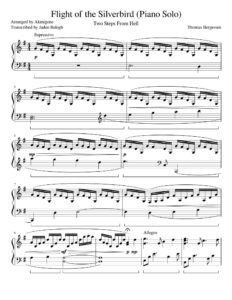 |
|
| Two Steps from Hell Invincible Sheet Music |
 |
|
| Two Steps From Hell Star Sky by Thomas Bergersen |
 |
|
| Txarango – La Dansa Del Vestit En Fa M |
 |
|
| Tymoczko, Prof. Dimitri MUSXI 105 Handouts 1 | Book Theory | |
| Tymoczko, Prof. Dimitri MUSIC 106 Handouts | Book Theory | |
| U2 The Piano Collection |
 |
U2 The Piano Collection |
| U2 – All I Want Is U | ||
| U2 – Best Of – (Guitar Tab Songbook) |
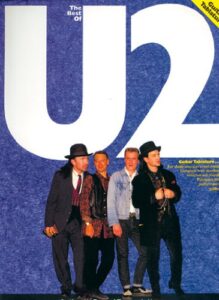 |
U2 – Best Of – (Guitar Tab Songbook) Contents — U2 – Best Of – (Guitar Tab Songbook) |
| U2 – How To Dismantle An Atomic Bomb (guitar tab songbook) |
 |
U2 – How To Dismantle An Atomic Bomb (guitar tab songbook) Contents — U2 – How To Dismantle An Atomic Bomb (guitar tab songbook) |
| U2 – October | ||
| U2 – Stuck In A Moment You Cant Get Out Of | ||
| U2 – The Best of 1990-2000 (Songbook) – U2 sheet music |
 |
U2 – The Best of 1990-2000 (Songbook) – U2 sheet music |
| U2 – The Best Of U2 (recorded versions) Guitar with TABs |
 |
U2 – Best Of – (Guitar Tab Songbook) |
| U2 – The Sweetest Thing | ||
| U2 Rock Score 5 Great Songs |
 |
|
| U2 The Joshua Tree Guitar Songbook with TABs |
 |
U2 The Joshua Tree Guitar Songbook |
| U2 WAR |
 |
U2 WAR |
| UB40 The Best Of – Piano, vocal & Guitar Songbook |
 |
UB40 The Best Of – Piano, vocal & Guitar Songbook |
| Ubi Caritas – Ola Gjeilo (Musescore File).mscz | ||
| Ubi Caritas -Ola Gjeilo-with piano improvisation |
 |
|
| Ukelele Chord Finder – Easy to use Guide |
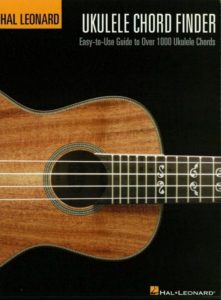 |
|
| Ukrainian folk song.mscz | ||
| Ukulele – 3-Chord Christmas Carols For Ukulele (Guitar Songbook Sheet Music) 30 Holiday Favorites With Just 3 Chords |
 |
Ukulele – 3-Chord Christmas Carols For Ukulele (Guitar Songbook Sheet Music) 30 Holiday Favorites With Just 3 Chords |
| Ukulele – Simple Songs For Ukulele (Guitar Sheet Music) |
 |
Ukulele – Simple Songs For Ukulele (Guitar Sheet Music) |
| Ukulele – The Daily Ukulele (Songbook) – Jim Beloff Guitar Sheet Music |
 |
|
| Ukulele for Kids Songbook Ukulele Method |
 |
|
| Ultimate 80s Songs |
 |
Ultimate 80s Songs |
| Ultimate Guitar Chord-Book |
 |
|
| Ultimate Guitar Songbook with TABs |
 |
Ultimate Guitar Songbook, The (110 songs) |
| Ultimate Latin Piano Riffs – Carlos Campos & Andrew D.Gordon |
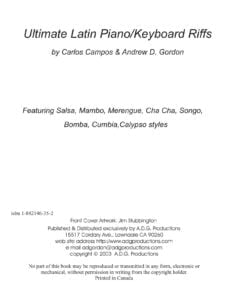 |
Ultimate Latin Piano Riffs – Carlos Campos & Andrew D.Gordon |
| Umberto Tozzi Gloria – Piano Vocal |
 |
|
| Un air de liberté (Et maintenant on va où OST) Khaled Mouzanar | ||
| Un anno d’amore (Mina) | ||
| Un Homme et son Chien (Philippe Rombi) | ||
| Un Monstre À Paris La Seine And I By Vanessa Paradis & Sean Lennon (Piano Vocal) |
 |
|
| Un Monstre à Paris – La Seine And I by Vanessa Paradis & Sean Lennon (Piano vocal).mscz | ||
| Una Mattina (Musescore File).mscz | ||
| Unchained Melody (Sheet Music) – The Righteous Brothers |
 |
|
| Under The Sea Ukulele Guitar From The Little Mermaid |
 |
|
| Under The Sea – Ukulele Guitar.mscz | ||
| Understanding chord progressions for Guitar by Arnie Berle |
 |
Understanding chord progressions for Guitar |
| Understanding The Fundamentals Of Classical Music Course Guide Modern Scholar (Book) |
 |
|
| Undertale Full OST – Toby Fox |
 |
|
| Undertale Megalovania Piano – Toby Fox |
 |
|
| Undertale – Home |
 |
|
| Undertale – Megalovania | ||
| Undertale OST – Hopes and Dreams Save the World |
 |
|
| UNDERTALE OST – Hopes and Dreams Save the World Piano Solo.mscz | ||
| Undertale OST – Hopes and DreamsSave the World.mscz | ||
| Undertale Ost – Nyeh Heh Heh! Bonetrousle |
 |
|
| Une Heure de Plus (Erik Berchot) | ||
| Unfaithful (Rihanna) | ||
| Unfinished Music – Richard Kramer |
 |
|
| Unforgettable – Irving Gordon (Nat King Cole Song) (Musescore File).mscz |
